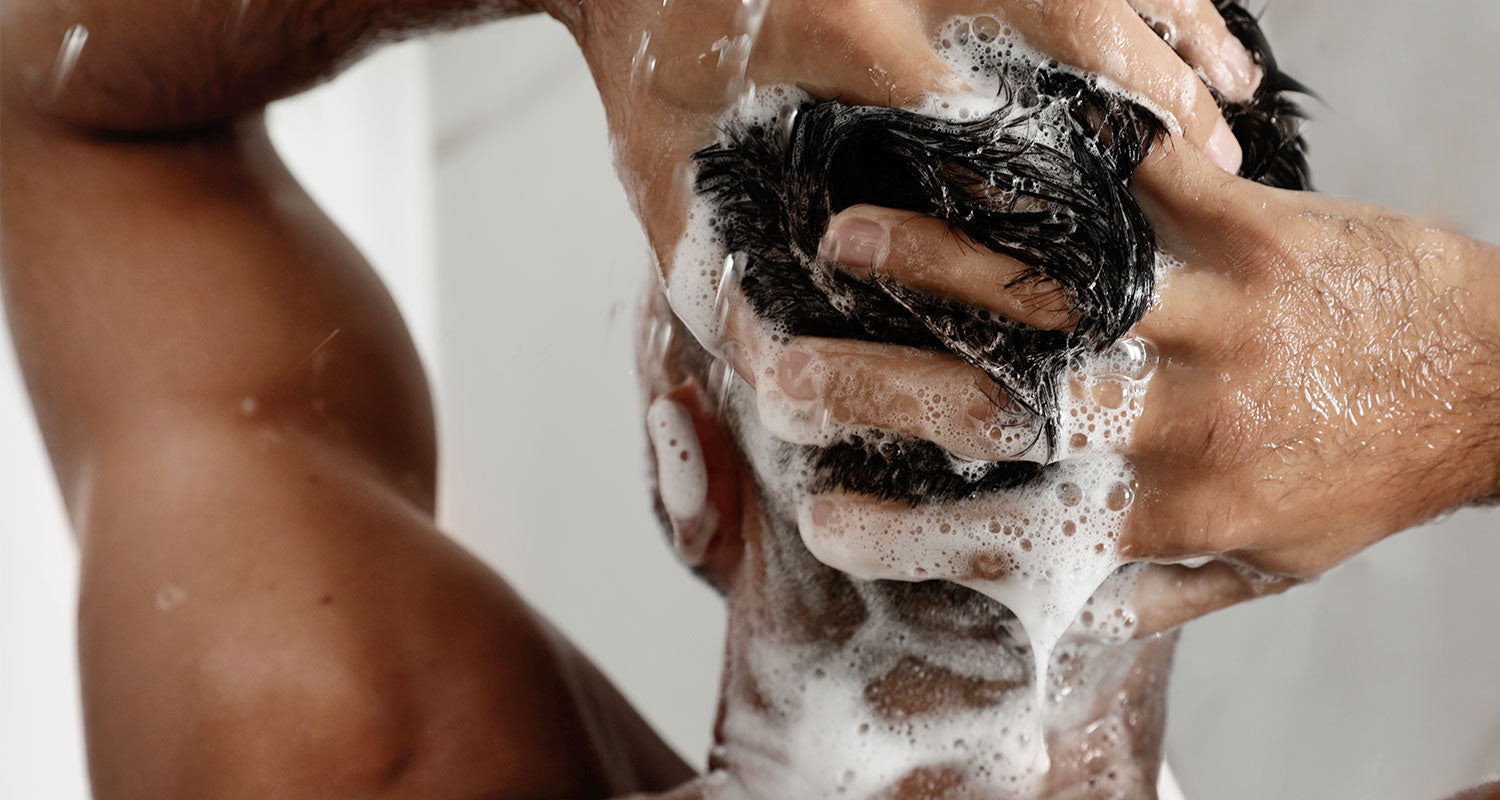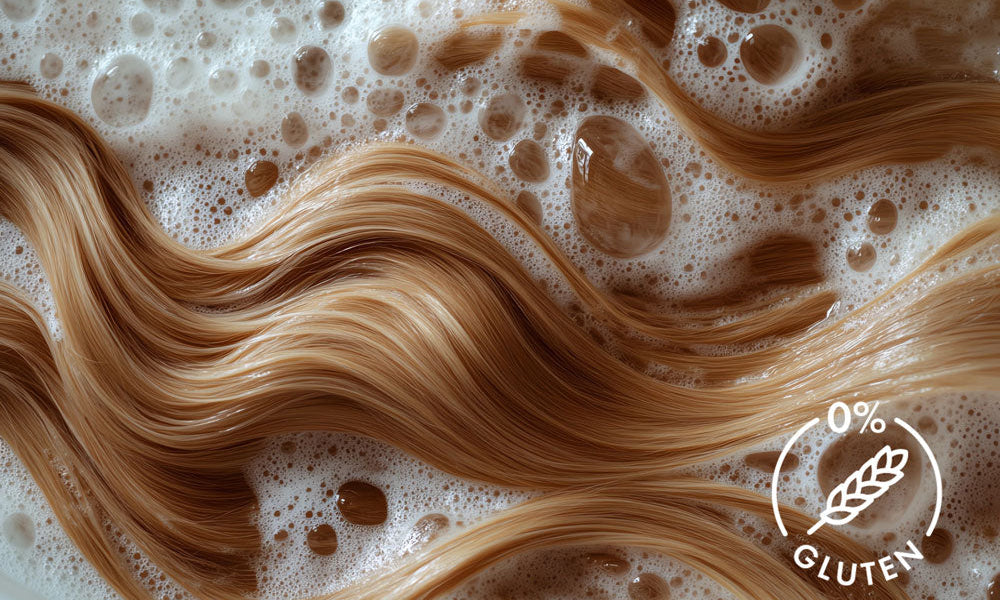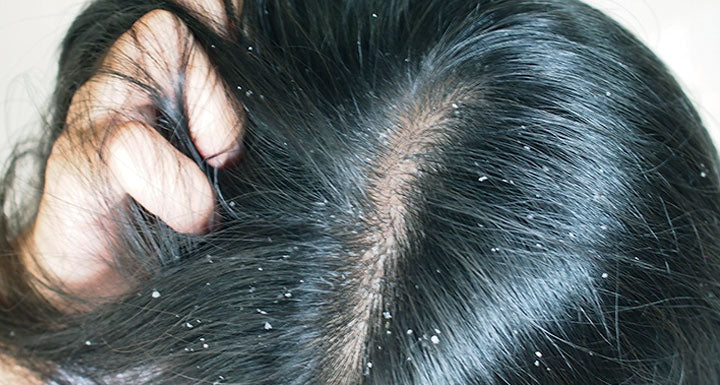For decades, Neutrogena T/Gel Shampoo has been a trusted solution for people struggling with dandruff, scalp psoriasis, and seborrheic dermatitis, but what's happened to it?
Known for its coal tar formula and dermatologist-recommended status, it became a household name for calming irritation and reducing flakes. But in recent years, many loyal users have found themselves asking the same questions:
- “Is T/Gel discontinued?”
- “What’s the best T/Gel alternative UK now that I can’t find it in stores?”
- "Is it safe to use?"
In this guide, we’ll cover everything you need to know:
- Why T/Gel was so popular
- How it worked and coal tar side effects
- The latest on whether it’s discontinued
- An avoidance first strategy to help with scalp sensitivities
- How to build a regime and switch safely
- FAQs to answer the most common concerns
Whether you’re looking for answers to frequently asked questions about T/Gel’s coal tar formula, or to explore more modern options like building a new regimen, this page is your one-stop hub for T/Gel shampoo alternatives.
Why T/Gel was so popular
Neutrogena’s T/Gel Therapeutic Shampoo built a reputation over decades because it offered a reliable, over-the-counter solution for scalp conditions like dandruff, seborrheic dermatitis, and scalp psoriasis.
-
It used coal tar (Neutar® Solubilised Coal Tar Extract) as its active ingredient, which is known to slow down skin cell proliferation, reduce inflammation, and reduce itching and flaking. Ref: neutrogena.co.uk
-
It had a positioning as a “therapeutic shampoo,” giving it credibility beyond simple cosmetic shampoos.
-
Its long track record and dermatological recommendation made it a go-to choice for many users seeking relief.
If you've been relying on Neutrogena T/Gel Therapeutic Shampoo for relief from dandruff, scalp psoriasis, or seborrhoeic dermatitis, you may have noticed some difficulties obtaining it lately.
Reports have surfaced indicating supply issues with the product, leading to questions about its availability in the market.
According to the Psoriasis Association, Neutrogena T/Gel Therapeutic Shampoo is unavailable due to supply challenges.
-
The Neutrogena website no longer lists the T/Gel Therapeutic Shampoo (Extra Strength).
-
In the UK and Ireland, the Psoriasis Association confirmed that T/Gel is no longer distributed in those markets. Psoriasis Association
-
The product is also flagged as discontinued on Neutrogena’s UK pages. neutrogena.co.uk
-
Anecdotal reports suggest that the withdrawal may be a permanent commercial decision. Psoriasis Association
How T/Gel worked and common side effects
Whilst many people can use coal tar based shampoos with little to no reaction, it can sometimes cause skin irritation, increased sensitivity to the sun (photosensitivity) and acne breakouts, according to the NHS. It is also reported to temporarily cause discolouration to hair (whilst not desirable, it is typically reversible after discontinuation of use).
How did T/Gel work?
-
Coal tar action: Coal tar is keratoplastic and anti-inflammatory. It slows down epidermal cell division, which helps reduce scaling, itching and flaking.
-
Scalp calming: It can reduce dandruff, seborrheic dermatitis, and scalp psoriasis symptoms by calming the scalp’s hyperactivity.
Usage note: Because coal tar shampoos can be strong-smelling, (sometimes) irritating, and photosensitising, users are often cautious in usage and frequency.
Try Avoidance First: a scalp friendly alternative to Coal Tar shampoos
Why avoidance works:
- Coal tar shampoos are linked to acne, irritation, photosensitivity, and concerns over long-term safety.
Read the references provided at the foot of this guide for further detailed information.
- Avoidance-based routines reduce exposure to common triggers (fragrance, dyes, harsh surfactants).
- A gentler approach can help minimise flare-ups and lower dependence on medicated shampoos.
Example: A avoidance based haircare regimen for psoriasis, eczema, seborrheic dermatitis or dandruff could look like the following.
| What to Use | Purpose | Notes | |
|---|---|---|---|
| 1-3 times per week | Medicated Shampoo (Typically contains, Ketoconazole, Salicylic Acid) | Targets dandruff, psoriasis, seborrheic dermatitis | As prescribed by a practitioner or medeical expert. |
| In between / off days | Olsson Scandinavia® or STUHR® Sensitive Shampoo | Gentle cleansing, protects scalp barrier, reduces risk of irritation. | Daily safe use; prevents dryness & irritation |
| Optional | Olsson Scandinavia® or STUHR® Sensitive Conditioner | Adds hydration and scalp comfort, reduces risk of irritation. | Daily safe use; after shampoo on non-medicated days |
How to support scalp health between treatments:
- Use allergy-approved, free from formulas between flare-ups. Avoid fragrances, harsh sulfates, parabens and known irritants.
- Maintain scalp balance (homeostasis) while reducing risk of irritation.
- Prevent the “yo-yo” effect of switching back to fragranced alternatives in between medicated washes.
What our customers experience:
- Fewer flare-ups.
- A reduced need for medicated shampoos.
- More comfort and consistency in managing conditions such as psoriasis, eczema, and seborrheic dermatitis.
Brands like Olsson Scandinavia® and STUHR®, both approved by leading allergy experts acrodd the Nordics and UK, offer mild, non-fragranced formulations that align with this avoidance-first strategy.
How to switch safely when updating your regimen
-
Patch test first: especially for medicated formulas, test behind the ear or on a small patch of scalp for 24 hours.
-
Alternate use: If your scalp is reactive, use the new formula only 1–2 times a week initially, interspersed with a mild shampoo or your regular non-medicated shampoo.
-
Monitor reaction: itching, burning, or exacerbation of symptoms may signal overuse or a non-compatible formula.
-
Be patient: some formulas take 2–4 weeks to show full benefit.
-
Consult a dermatologist: especially if you have scalp psoriasis, deep inflammation, or sensitivities.


